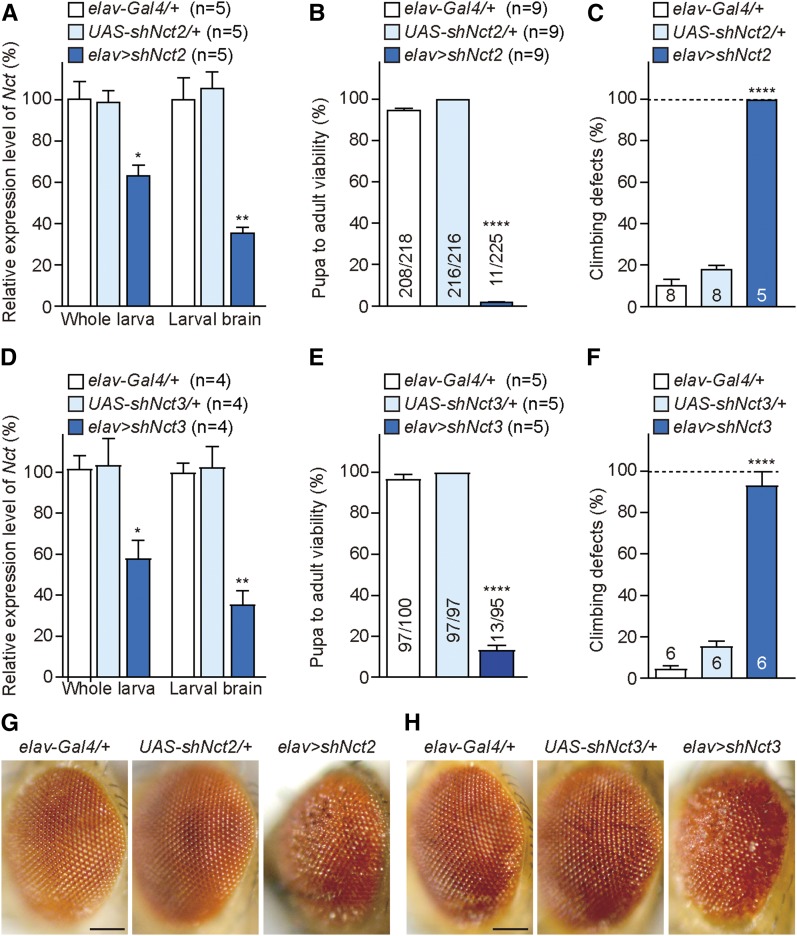Figure 6.
Severe early mortality, climbing defects, and rough eyes in elav > shNct flies. (A, D) Neuron-specific Nct KD using two independent lines, UAS-shNct2 (A) and UAS-shNct3 (D), results in significant reduction of Nct mRNA levels in third-instar larvae compared to controls. qRT-PCR analysis of Nct mRNA level in third-instar larvae (whole larvae or dissected brains) of elav > shNct2 (A) and elav > shNct3 (D). Nct mRNA levels are normalized to rp49 mRNA levels as internal control. Total RNA was extracted from whole larvae (five larvae per genotype) or larval brains (15 brains per genotype). n = 4–5 independent experiments. (B, E) Neuron-specific Nct KD results in decreased pupa-to-adult viability. Viability was calculated by dividing the total number of flies by the total number of pupae, and shown as the percentage of pupae surviving to adulthood. (B) Only 11 females elav > shNct2 eclosed from 225 pupae. n = 9 independent experiments. Total numbers of flies tested: elav-Gal4/+ = 218, UAS-shNct2/+ = 216, and elav > shNct2 = 225 (20 flies per experiment). (E) Only 13 females elav > shNct3 eclosed from 95 pupae; n = 5 independent experiments. Total numbers of flies tested: elav-Gal4/+ = 100, UAS-shNct3/+ = 97, and elav > shNct3 = 95 (20 flies per experiment). (C, F) Neuron-specific Nct KD causes defects in climbing ability. Bar indicates percentage of failed climbers. Age = 3 days. Gal4 and UAS controls: n = 6–8 independent experiments, ≥110 flies per genotype (20 flies per experiment). elav > shNct2: n = 5 flies (C) and elav > shNct3: n = 14 flies (F). (G, H) Females of both elav > shNct2 (G) and elav > shNct3 (H) exhibit rough eye phenotypes. Representative images showing the adult eye of each genotype. Bar, 0.1 mm All data are expressed as mean ± SEM. Statistical analysis was performed using one-way ANOVA with Dunnett’s post hoc comparisons. *P < 0.05, **P < 0.01, ****P < 0.0001.

